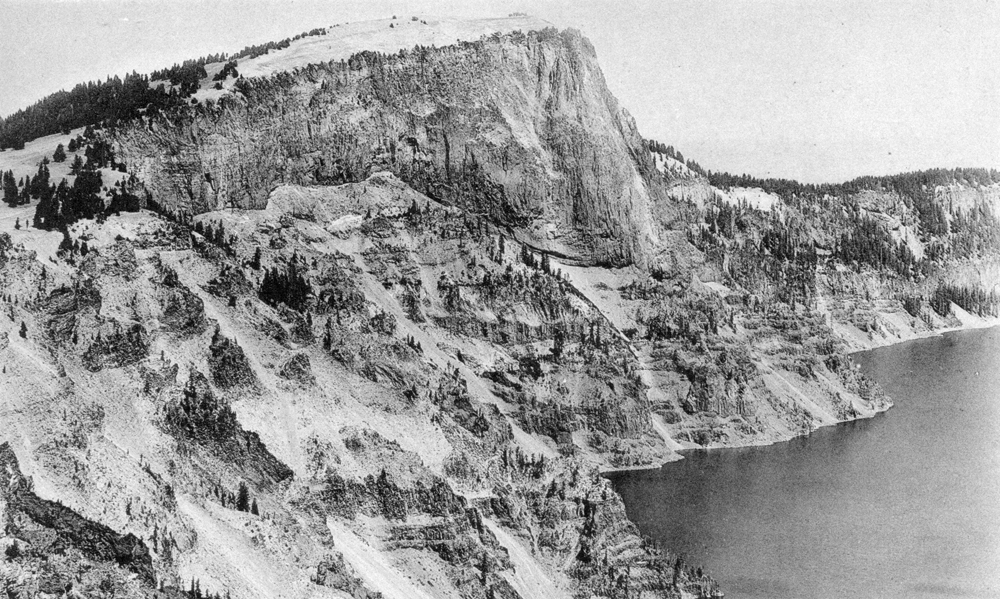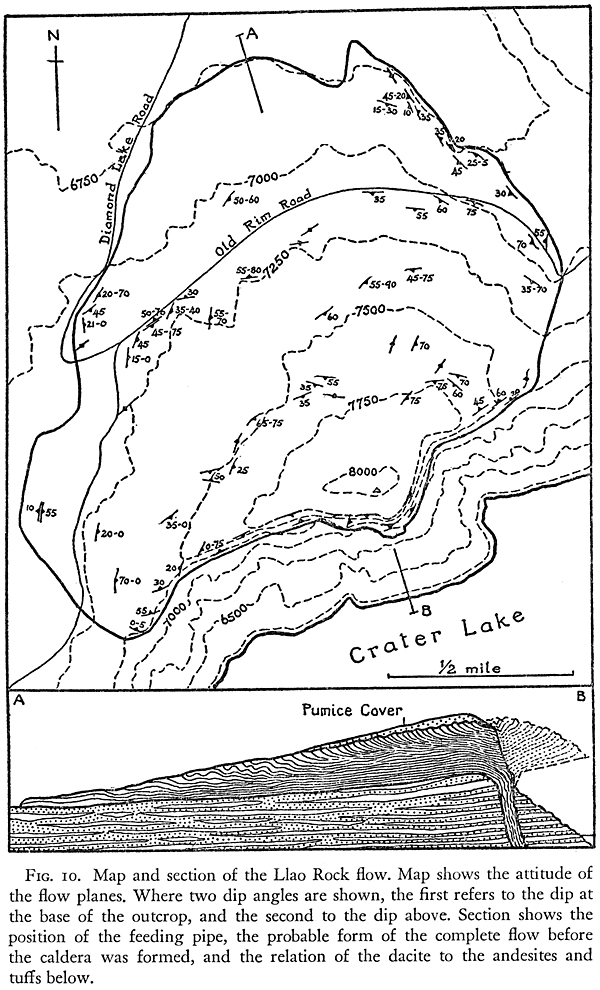|
Plate 12. Fig. 1 The Llao Rock dacite flow. The feeder lies at the base of the main cliff. Above the flow lie bedded pumice deposits, products of the culminating eruptions of Mount Mazama. For explanation of pre-Llao deposits, see panorama, plates 28 and 29. (Photograph by George Grant, National Park Service.) |
The flow. The eruption of the Llao dacite was preceded by explosions of dacite pumice. The products of these explosions may be examined on the east side of the glacial valley, where they vary in thickness between 20 and 50 feet. At the base, they are incoherent or but weakly compacted, and consist of coarse lump pumice crowded with angular blocks of andesite. Some of the foreign blocks measure a yard across, but most are less than 6 inches in diameter. Their number is such as to indicate the blasting of a large vent. In its upper part, the lump pumice becomes increasingly compact and welded. Close to the base of the overlying lava it develops such a strong, streaky banding and is so dense that it is difficult to say where the flow begins and the welded pumice ends. Presumably it was the heat and weight of the lava above which caused collapse and welding of the topmost pumice.
|
Fig. 10. Map and section of the Llao Rock flow. Map shows the attitude of the flow planes. Where two dip angles are shown, the first refers to the dip at the base of the outcrop, and the second to the dip above. Section shows the position of the feeding pipe, the probable form of the complete flow before the caldera was formed, and the relation of the dacite to the andesites and tuffs below. |
If the portion of the Llao lava lost during the formation of the caldera were restored, a large dome would be seen above the vent. The internal structure of this dome would probably be fan-shaped, the flow planes steepening upward and inward. Clearly, the lava can never have extended far toward the south, for its movement in that direction was opposed by the slope of the main cone of Mazama (section, figure 10).



